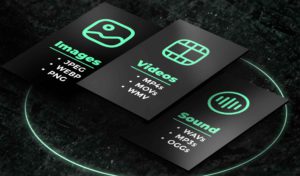In today’s rapidly evolving work landscape, where remote work is becoming the norm, effective employee monitoring has emerged as a crucial aspect of business management. The rollout of monitoring software and employee monitoring software has become imperative for businesses to ensure productivity, accountability, and compliance. However, implementing monitoring processes requires a delicate balance between oversight and respect for employee privacy. Here we will get into the best practices for monitoring your employees the right way, promoting transparency, productivity, and morale.
How to Monitor Your Employees the Right Way
Transparency is Key
Transparency lays the foundation for successful employee monitoring initiatives. When introducing monitoring software or policies, it’s essential to communicate openly with your employees. Explain the purpose of the rollout of monitoring software, what data will be collected, and how it will be used. Address any concerns about privacy invasion and assure employees that their rights are respected. By fostering transparency, businesses can build trust and mitigate resistance to monitoring efforts.
Empower with Self-Monitoring Tools
Empowering employees with self-monitoring tools can enhance accountability and productivity. Employee monitoring software like Controlio provides features such as activity logs, project roadmaps, and checklists, enabling individuals and teams to track their progress effectively. By giving employees control over their monitoring process, businesses can promote a culture of ownership and responsibility.
Incentivize Compliance
While monitoring is essential for enforcing compliance, adopting a punitive approach can backfire. Instead, businesses should incentivize compliance and solid work hustle. By rewarding employees who adhere to corporate policies and meet deadlines, businesses can create a positive reinforcement system that boosts morale and engagement. Gamifying monitoring and timekeeping processes can further incentivize employees to excel, fostering a culture of continuous improvement.
Addressing Bias and Discrimination
To ensure fairness and equity in monitoring practices, businesses must continually evaluate their systems for bias and discrimination. This entails monitoring the level of scrutiny applied to different employee groups, particularly marginalized populations. By identifying and addressing biases in monitoring processes, businesses can promote diversity, inclusion, and equality in the workplace.
Harnessing First-Hand Accounts
While technological monitoring provides detailed insights, first-hand accounts offer valuable qualitative data. Businesses should actively seek feedback from employees, customers, clients, and vendors to gain a holistic understanding of performance. By leveraging a constant stream of information, businesses can identify areas for improvement and drive organizational success.
Controlio: Revolutionizing Employee Monitoring
Controlio offers advanced monitoring capabilities, allowing businesses to track employee activities, web usage, and application usage in real time. With its user-friendly interface and customizable features, Controlio empowers businesses to monitor employees efficiently while respecting their privacy. From activity logging to productivity analysis, Controlio provides comprehensive insights to optimize workforce performance.
Conclusion
Mastering employee monitoring is essential for modern businesses seeking to optimize performance and ensure compliance. The rollout of monitoring software and employee monitoring software presents opportunities to enhance transparency, accountability, and productivity. By embracing best practices such as transparency, empowerment, incentivization, bias mitigation, and feedback integration, businesses can create a monitoring framework that fosters trust, engagement, and success.





Be First to Comment